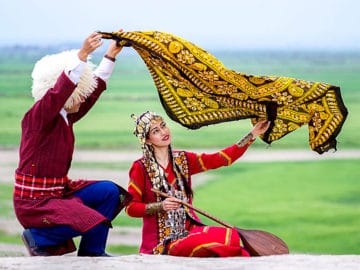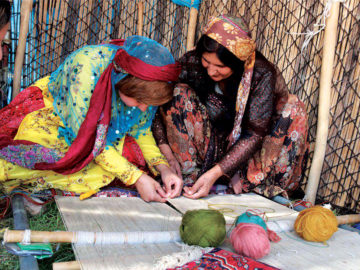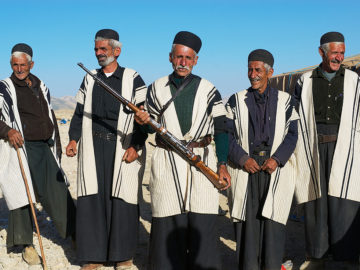
Qashqai Nomad, Iran
Photo by Marie Wilson/ Shutterstock
Iran has been home to both immigrant and settled tribes, which had great role in the evolution of Iranian politics. Cultural diversity of Iranian nomads in their clothes, cuisine, music and daily life attracts tourists from all around the world to their habitats in plains and mountains of Iran.
Historically, Aryans are the first immigrant tribe residing in Iran, which later a branch of them established the glorious Achaemenid Emperor. Both in pre-Islam eras of Iran, and the Islamic Iran these tribes played important role in government and many times took the control of the country. Seljuk, Timurid, Safavid, Turkmen, Afsharid, Zandieh, and Qajar are among the most famous immigrant tribes that became the main rulers of Iran.
Aryans are the first immigrant tribe residing in Iran, which later a branch of them established the glorious Achaemenid Emperor.
Common characteristic of all Iranian tribes is living in harmony with nature and overcoming challenges. It is important to mention that the term tribe and nomad are different from each other. In fact nomads are immigrant group who belong to one of Iranian tribes of Turk, Fars, Lur, Kurd, Turkmen and Arab. The distribution of these tribes divide the country to five main region. 1) north and north west, 2) west, south and south west, 3) north east, 4) north east and south east, and 5) central region.
The main occupation of Iranian nomads in all aforementioned regions is animal husbandry, a job that makes the nomad be in constant search for pasture and meadow, and therefore, emigrate from one place to another. Agriculture and producing handicrafts are also among nomad’s activities, which has its limitation regarding the environmental condition. It is interesting to say that kinship is very important for nomads and considered as basis for tribal relationship. The kinship has three forms of Nasabi, Sababi and Armani.
The main occupation of Iranian nomads is animal husbandry, a job that makes the nomad be in constant search for pasture and meadow, and therefore, emigrate from one place to another. Kinship is very important for nomads and considered as basis for tribal relationship. The kinship has three forms of Nasabi, Sababi and Armani.

Bakhtiari Nomad, Iran
Photo by Abbas Jafari
The Nasabi relations are in form of blood relations that include immediate and far relatives that come from the same ancestor and share a common origin. This form of relation can be traced on both mother side and father side. If the emphasis is on the bloodline of the father, then the name, family, and social status is inherited from father and the male child is prioritized. If the emphasis is on mother, then the name, family and social status is inherited from her and the female child is prioritized.

Qashqai Nomad, Iran
Photo by MehmetO/ Shutterstock
The Sababi relation is gained through marriage and not blood relations. In families that have both girls and boys in marriage age, sometimes, double weddings are held and a girl from each of the families marries the boy from the other. This tradition is called Ƶen (/Ʒen/) Be Ƶeneh (/Ʒene/) in Kurdish Tribe. The Armani relation does not include blood or nuptial relations, and includes a far common ancestor among the members of the tribe. The difference of this relation with Nasabi one is that in this form one has to go several generation back to find the common ancestor, but the Nasabi Relatives are closer in this regard.
There are different group of nomads here in Iran but the most important ones in term of population are Bakhtiari, Shahsavan, Qashqai, Baluch, and Khamseh. Each of them have their own governmental structure, culture, rules and tradition.
In recent years, the lifestyle, culture and products of the Nomadic tribe became universally known and appreciated. As a result, more and more people were interested in visiting them, and they became popular tourist destinations of Iran. Some nomads prepare facilities for tourists to stay that is not only a means of income, but also a way of preserving a lifestyle that emphasizes simplicity and unity.






